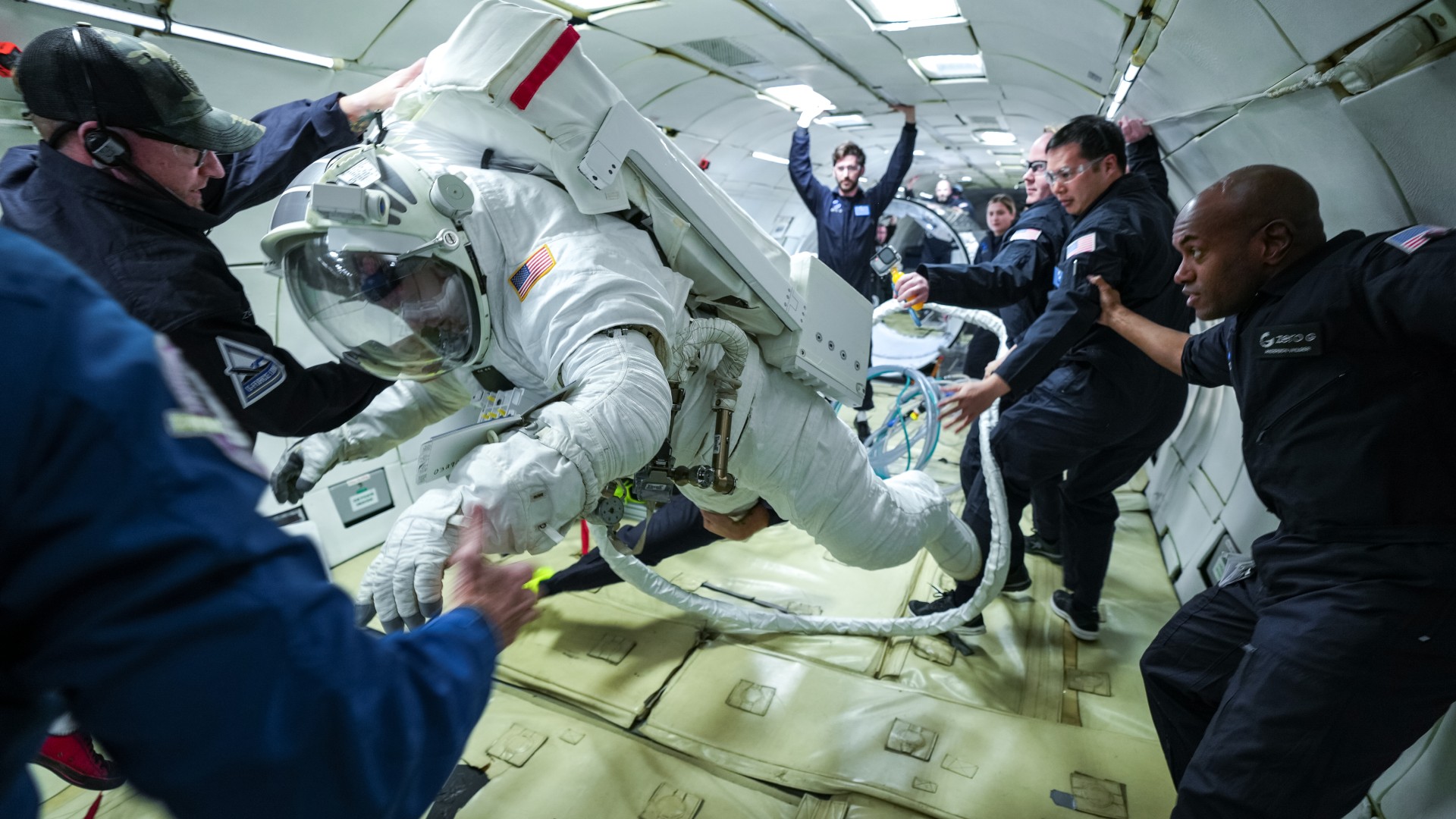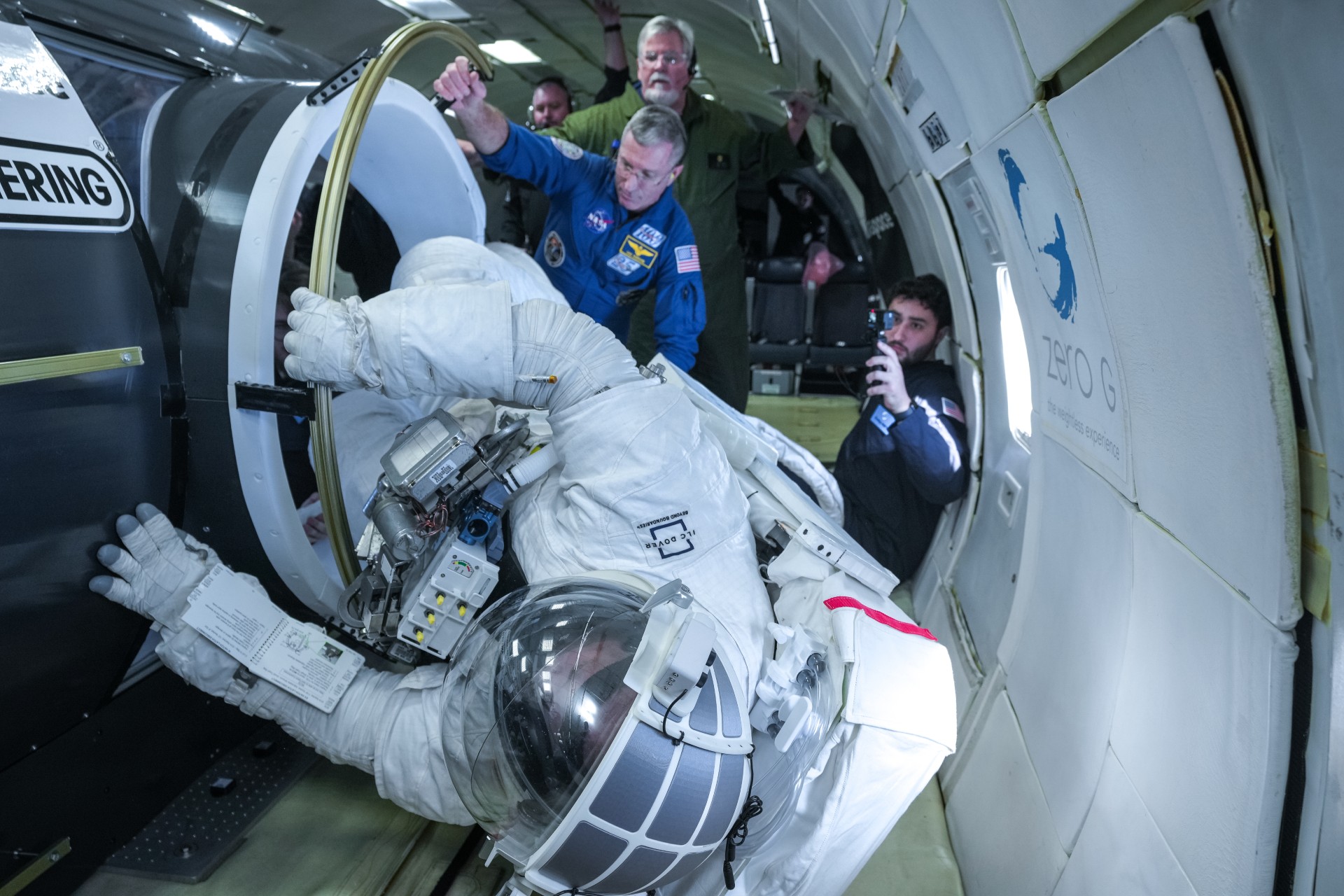
A new International Space Station spacesuit design now has several minutes of microgravity testing under its belt.
Collins Aerospace put a new spacesuit for International Space Station spacewalks through its paces on 40 parabolic flights with Zero G concluding this month, the company said in a statement Wednesday (Jan. 31).
"Throughout a series of entry and exit tasks, crew mobility assessments and suit donning, we observed that the suit performed as designed, affording increased range of motion and ease of movement," Peggy Guirgis, general manager of space systems for Collins, said in the statement.
Parabolic flights simulate microgravity or weightlessness for about 30 seconds at a time as the plane pushes into the air at a high angle, crests at the top and then falls in a controlled fashion before swooping up again.
Related: I flew weightlessly on a parabolic flight to see incredible student science soar

NASA tasked Collins in 2022 with developing a next-generation Extravehicular Mobility Unit (EMU) spacesuit that will be more flexible, lighter and able to accommodate more body sizes during spacewalks.
The current generation of spacesuit on ISS was designed in the 1970s when the astronaut corps was fully male. Aside from the current spacesuits being old, they trend on the larger and stiffer side.

NASA's Exploration Extravehicular Activity Services (xEVAS) agreements in May 2022 gave the opportunity to Collins and its partners, along with a team led by Axiom Space, to create an updated version with flexibility and sizing to suit different genders and a wider variety of astronaut bodies. xEVAS is meant to target both ISS missions and NASA's Artemis program that will put astronauts on the moon in the 2020s, at the earliest.

The agreement allowed both Collins and Axiom the chance to bid on NASA task orders for specific projects, and Collins received one in December 2022. Collins, along with partners ILC Dover and Oceaneering, would "design, develop and demonstrate" a spacesuit design for future ISS missions, the company stated when the task order was awarded.

Collins' parabolic flights concluding this month included an environment with a "similar geometry" to the ISS airlock, and evaluated metrics such as "reach, workspace access, comfort, ease of use and injury reduction measures" for astronauts, the company stated in its most recent release. Collins has also been consulting with astronauts (former and current) to learn more about needs during spacewalks.
The company is shooting for a critical design review to finalize the design. More testing will happen first, however, in a simulated vacuum environment, as well as underwater at NASA's Neutral Buoyancy Laboratory for spacewalk training in Houston, near the agency's Johnson Space Center.
Aside from the ISS work by Collins, both Collins and Axiom received a combined $10 million task order in July 2023 for Artemis. Collins plans to modify its floating-style spacesuit to make it suitable for walking on the lunar surface, officials said at the time. Axiom will make modifications to its surface suit for future activities.
A separate task order asked Axiom to supply the spacesuits for debut moon landing mission Artemis 3 (expected now for 2026). The surface spacesuit may reach a critical design review this summer.







